Education
Diamond Shape
The shape of a diamond can also be referred to as its appearance. While a diamonds shape actually has little effect on value, stylistically, it is arguably the most important part.
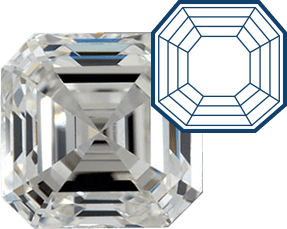
Asscher Cut
An Asscher Cut Diamond utilizes many of the same cutting techniques as the Emerald Cut, with a few distinct twists.
- Introduced in 1902 by renowned diamond cutter Joseph Asscher
- Uniquely angled and cropped corners
- Produces unrivaled brilliance
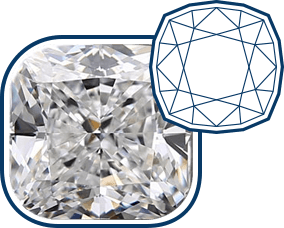
Cushion Cut
The cushion cut diamond is rich with diamond history. It is considered by many to be a more vintage version of the round cut diamond.
- Introduced in the early 1800’s
- Square or rectangular shape with rounded corners and sides
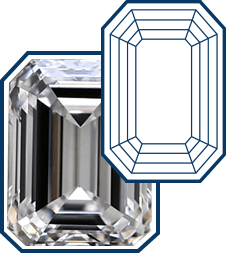
Emerald Cut
Emerald cut diamonds are usually rectangular in shape. Distinguished by beveled corners and step facets, this type of diamond is more transparent than other shapes, often requiring higher standards of clarity.
- Originally developed for cutting emeralds, hence the name
- Produces a hall of mirrors effect
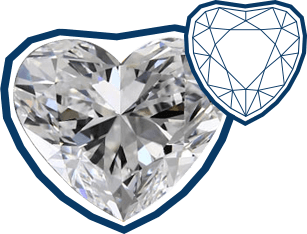
Heart Cut
Living up to its name, the heart cut diamond has become synonymous with love and affection, making it an excellent choice for an anniversary or engagement ring. One of the most demanding diamond cuts to create, a heart shaped stone requires great skill and dexterity from the diamond cutter.
- Modified brilliant cut
- Symmetry is very important
- This cut works best with larger carat diamonds
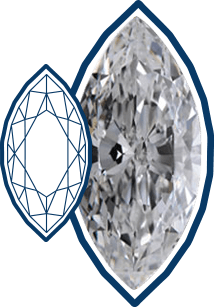
Marquise Cut
The marquise cut is rumored to have been specially developed for King Louis XIV of France who wanted a diamond that simulated the smile of Marquise de Pompadour. The elongated Marquise stone has gracefully pointed ends for a dramatically beautiful appeal.
- Has one of the largest crowns when compared to diamonds of a similar carat
- The large crown increases the perceived diamond size
- The elongated shape tends to make the wearers finger appear longer and slimmer
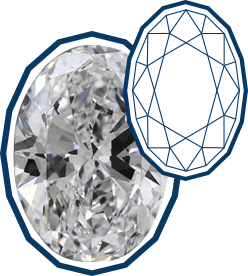
Oval Cut
Cut with the same number of facets as a round diamond, an oval shape emits nearly the same level of brilliance and fire. Due to its elongated shape, the oval cut can appear larger than a round diamond of equal carat (weight).
- First introduced by Lazare Kaplan in the 1960's
- The elongated shape can increase perceived diamond size
- The elongated shape tends to make the wearers finger appear longer and slimmer
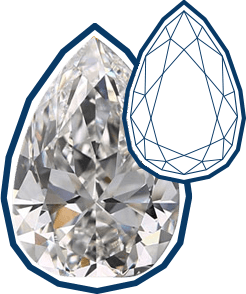
Pear Cut
Exuding elegance, the pear shape diamond is cut to resemble a drop of water with a single point and rounded end. The result is a cross between a round and marquise cut.
- Also referred to as a drop cut or teardrop diamond
- Comes in a range of cuts from slim to wide
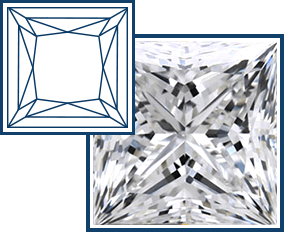
Princess Cut
Unique characteristics of a Princess Cut Diamond
- Square stone with 90⁰ corners
- Originated in the U.S. in 1980
- Most valuable when perfectly square
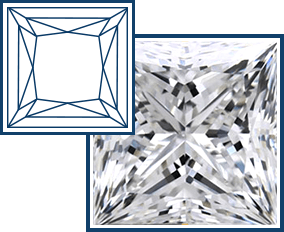
Radiant Cut
This unique shape is a stunning hybrid of a traditional round cut and an elegant emerald cut, resulting in a square, near-square, or rectangular orientation.
- Relatively new, radiant diamonds were introduced just over 20 years ago
- Tend to emit a more beautiful, memorable glow
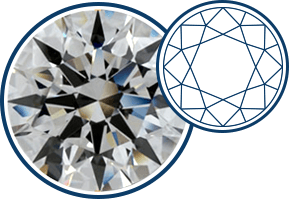
Round Cut
The most commonly chosen shape, round diamonds have been researched by gemologists more than any other variation.
- Unrivaled fire and brilliance
- Excellent light refraction properties
- Most valuable of all diamond cuts
Let's Start a Conversation
Like all relationships, it starts with a simple conversation.